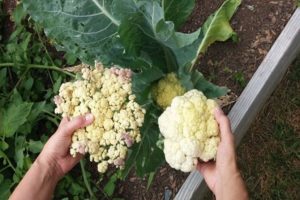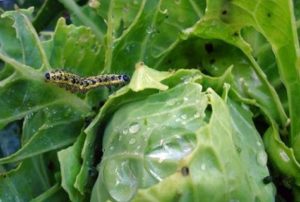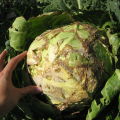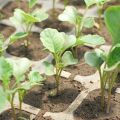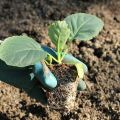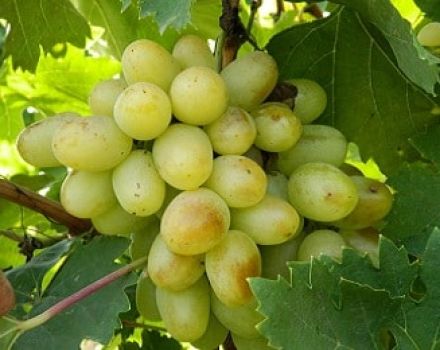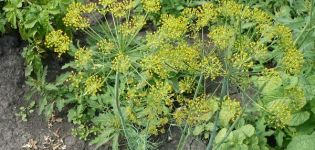Description of the cabbage variety Brigadir f1, features of cultivation and yield
Cabbage Brigadier f1 today has become extremely popular with Russian gardeners, and this variety can be found in many household plots. The white-headed species is distinguished by high yield rates and undemanding growing conditions. To obtain the desired result in the form of large heads of large mass, it is recommended to learn about the nuances of growing this variety.
Description of the variety
Cabbage variety Brigadir belongs to a variety of white-headed crops with a mid-ripening period. On average, the growing season lasts 120 days. The plant can be grown outdoors and in closed greenhouse complexes.
The hybrid gives compact, dense heads of cabbage, which in the section have a white tint. The average weight of the fetus is 4 to 5 kg. The yield of fruits corresponding to market indicators is 93%.
Growing and care features
An important role for obtaining high yields is played by observing the rule of alternating planting of horticultural crops. The best precursors for planting cabbage varieties are cucumbers, tomatoes, potatoes, carrots and legumes. It is not recommended to plant cabbage in the place of previous places of growing similar crops. The Brigadier can be returned to the place where cabbage is grown only after 4 years.
Yield indicators largely depend on the quality of the planting material, in this regard, the purchase of seeds should be made only in specialized stores. Seeds of Brigadier cabbage are planted in spring, April is considered the optimal planting time for Russian regions.
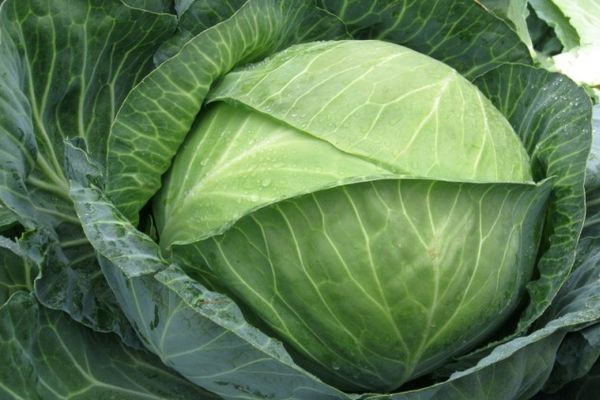
Despite the undemanding variety to the growing conditions, the soil must be fertile. When self-preparing the soil, humus, sod and ash are mixed. Do not use soil previously used for growing cruciferous crops.
Before planting, the planting material is heated in warm water for 20 minutes, after which it is immersed in cold water. Such actions help protect the plant from fungal diseases. For a more friendly germination of seeds, it is recommended to treat them with a growth stimulator. The embedment depth should be no more than 1 cm, after planting, the container is covered with a film and placed in a room with a temperature of 20 C.
On average, the first shoots appear in 5 days. The plant is demanding for the presence of fresh air, but does not tolerate drafts. Light illumination must be provided for 15 hours, if insufficient, it is recommended to use fluorescent lamps.
The pick is carried out after 2 weeks after the appearance of the first shoots. 2 weeks before planting, the seedlings are hardened.

Advantages and disadvantages
The variety shows high yields when grown in difficult growing conditions. Positive characteristics of horticultural crops include:
- lack of tendency of heads of cabbage to crack;
- resistance to fusarium;
- a high degree of resistance to stress as a result of exposure to temperature changes;
- stable yield indicators.
Reviews of gardeners confirm that, subject to the proper rules of growing technology, the variety is practically devoid of disadvantages. The variety withstands invasions of cabbage diseases and pests. The unpretentiousness of the plant is largely due to the good development of the root system. The fruits can be used both fresh and for fermentation purposes.
Pests and diseases
The foreman tolerates the conditions of insufficient watering well, while the yield indicators decrease slightly. Possesses good resistance to fusarium. The foreman is one of the few hybrids that can survive most cabbage diseases.
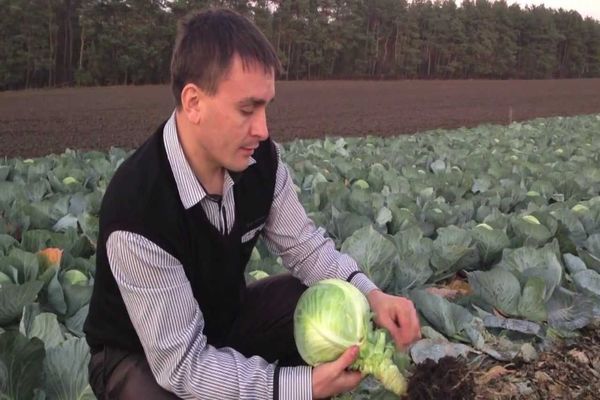
A hybrid of a well-known French manufacturer of the company is highly resistant to unfavorable climatic growing conditions. The variety is able to withstand a drop in temperature and a lack of moisture.
Harvesting and storage
To preserve the taste and appearance of cabbage, watering is stopped 3 weeks before harvesting. It is not recommended to procrastinate with the harvest time, since when low temperatures come, the fruits lose their long-term storage properties.
Cabbage is removed from the planting site along with the stump. Damaged fruits and heads of cabbage with defects are used first. It is unacceptable to store individual damaged specimens together with cabbage without signs of damage.
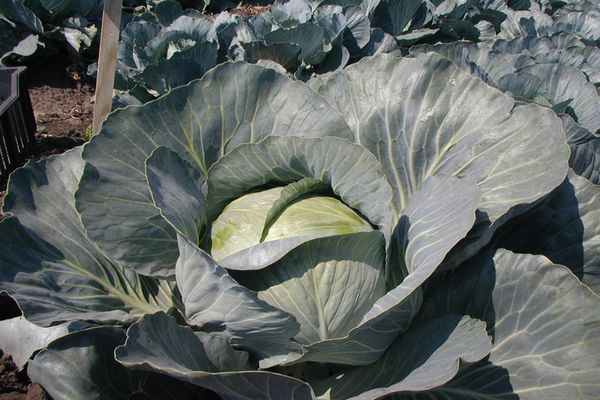
Cabbage for storage is placed under the shed for 24 hours, then the stump is cut off. In this case, the processed fruit should have at least 3 leaves, leave 3 leaves. For storage, you must use a dark, cool room with a temperature regime of at least 0 C and high humidity. The variety retains its taste for 4-5 months from the date of fruit picking.
Gardeners reviews
Anastasia, 63 years old:
“For several years I have been giving the choice in favor of growing the Brigadier cabbage variety. Cabbage is stored throughout the winter season, its taste is not lost when consumed fresh or in soups. Family members like it. "
Juliana, 31 years old:
“We tried the variety two years ago and in the first year appreciated the merits of the Brigadier. With a minimum of effort, we get good yields, which is important when there is a lack of time. Cabbage is suitable for use in salads and for pickling purposes. Even when stored in winter, the variety pleases with its taste. "
